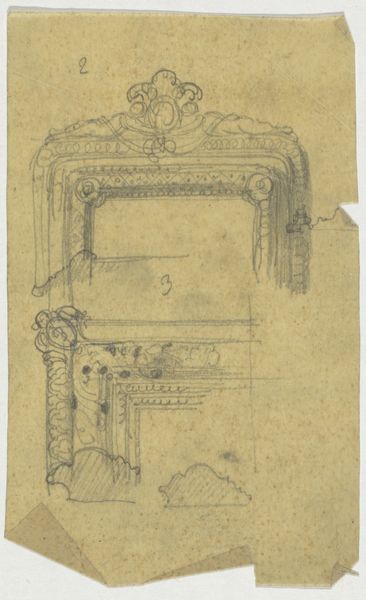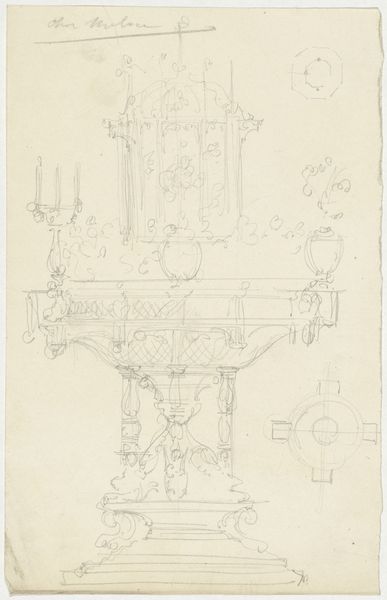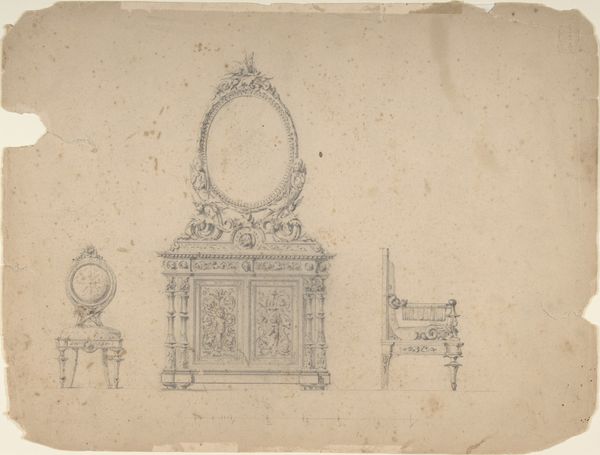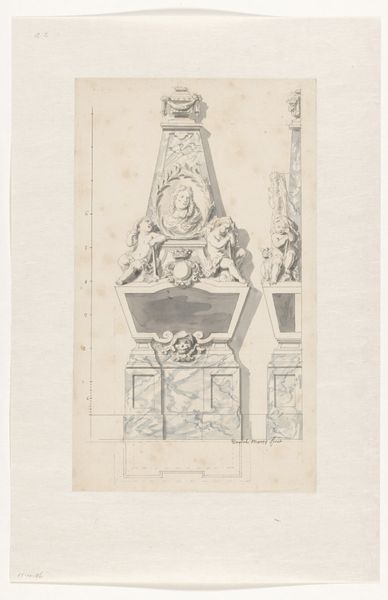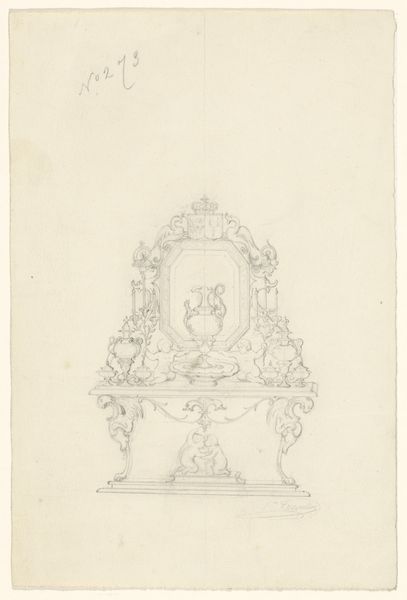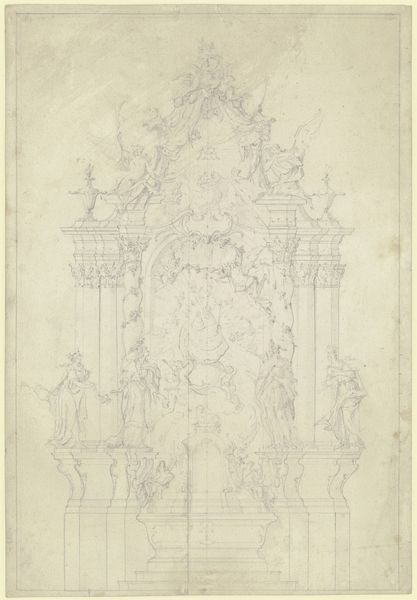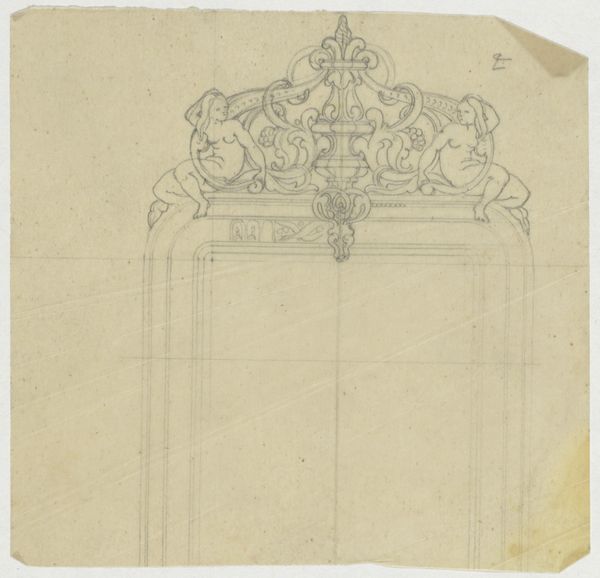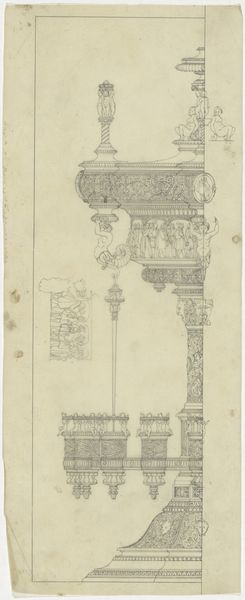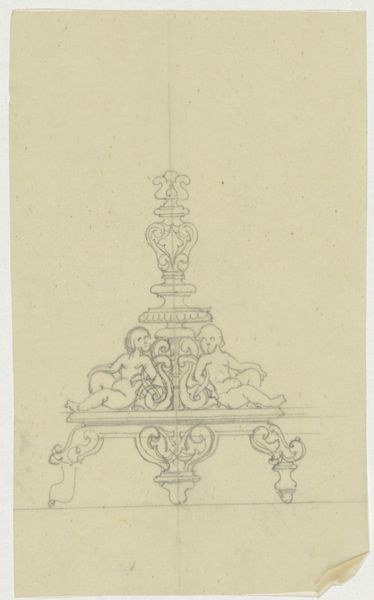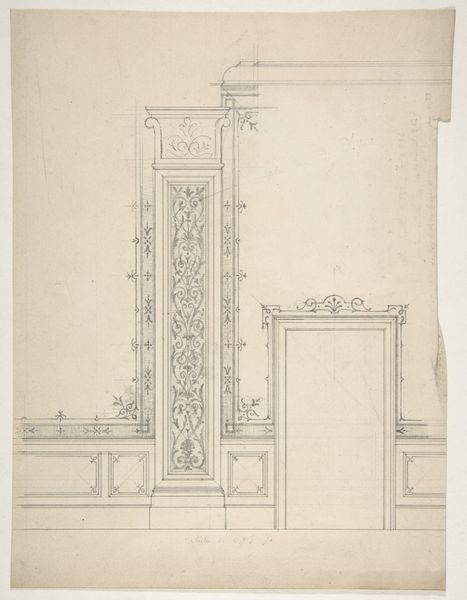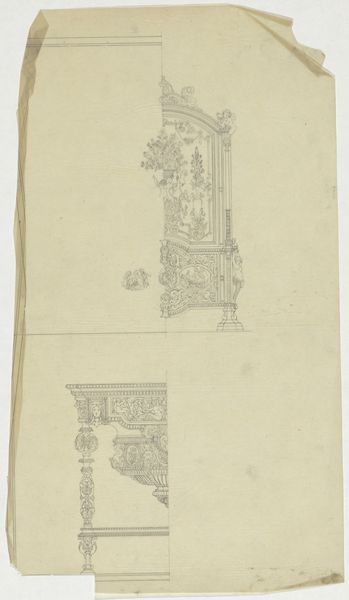
drawing, paper, pencil
#
drawing
#
neoclacissism
#
etching
#
paper
#
form
#
pencil
#
line
#
academic-art
#
decorative-art
Dimensions: height 112 mm, width 149 mm
Copyright: Rijks Museum: Open Domain
Editor: So, here we have "Top of a Frame," believed to be created between 1830 and 1850 by Firma Feuchère. It's a pencil drawing on paper, and what strikes me is the sheer amount of ornate detail they fit into such a small section. What do you make of it? Curator: Well, at first glance, we are encountering neoclassicism, but let’s dig deeper. This drawing isn't just about aesthetic beauty; it’s a cultural artifact reflecting the values of its time. Do you see how it employs classical motifs, these figures? Who benefited from this neoclassical visual language, and who was excluded or othered by it? Editor: That's interesting; I hadn’t considered who this style served back then. It feels so detached now, but you're right; this was definitely about power and status. Curator: Exactly. And consider the Firma Feuchère itself. Understanding the social standing and role of decorative firms helps us analyze its potential influences on their design choices. What underlying social and political structures may have shaped the firm's artistic expression? Editor: So, it's like decoding a visual language of class and taste. Did these kinds of adornments play a part in the separation between the social classes? Curator: Indeed. The opulence on display—reflects and reinforces social hierarchies. It also reveals the labour involved. Thinking about this frame, even as a sketch, who do you imagine created the actual object? Whose hands were building the actual frame? Editor: I guess wealthy people hiring skilled workers or craftsmen, definitely. Curator: Precisely! We must always critically examine art's relationship to power dynamics. Looking at "Top of a Frame" offers valuable insights into the sociopolitical fabric of the 19th century, because it perpetuated the social standing. It shows the reality behind visual representation. Editor: I will keep that in mind going forward. Curator: A new way of thinking for future engagement!
Comments
No comments
Be the first to comment and join the conversation on the ultimate creative platform.
